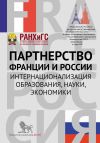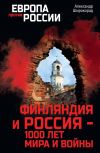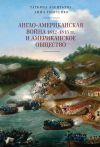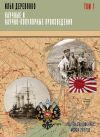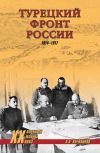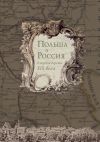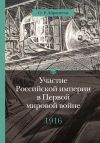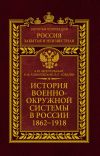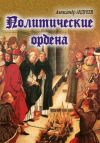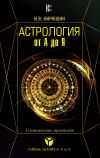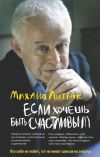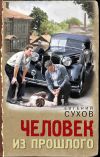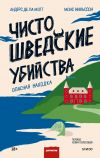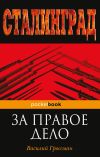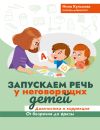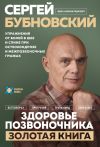
Автор книги: Сборник статей
Жанр: История, Наука и Образование
сообщить о неприемлемом содержимом
Текущая страница: 11 (всего у книги 33 страниц) [доступный отрывок для чтения: 11 страниц]
In most West and Central European societies at the turn of the century, the varieties of capitalism occupied a more narrow range of activities and social types. Perhaps only in Spain could a rough parallel be drawn with the Russian case. The reasons for the coexistence of different layers of capitalist activities in Russia are sufficiently well-known to require anything more than a brief enumerations: the slow growth of the private sector under serfdom mainly in textiles, bearing the imprint of its serf-capitalist origins; the late and only partial emancipation of the peasantry, the long, entrenched tradition of state owned and operated industry for defense in woolen cloth and metallurgy; the belated decision to launch and major industrial campaign from above nurtured by artificially protected markets and subsidies for inefficient enterprises; and the large role of foreign investment and foreign technology transfer.[240]240
Alexander Gerschenkron, Economic Backwardness in Historical Perspective. A Book of Essays (Cambridge, Mass: Belknap Press, 1962), p. 5, 16–21; John P. McKay, Pioneers for Profit. Foreign Entrepreneurship and Russian Industrialization 1885–1913 (University of Chicago Press, 1970); Daniel Chirot, The Origins of Backwardness in Eastern Europe. Economics and Politics from the Middle Ages until the Early Twentieth Century (Berkeley: University of California Press, 1991); Boris V. Anan’ich, “The Economic Policy of the Tsarist Government and Enterprise in Russia from the End of the Nineteenth through the Beginning of the Twentieth Century”, in Gregory Guroff and Fred V. Carstensen (eds.) Entrepreneurship in Imperial Russia and the Soviet Union (Princeton; Princeton UP, 1983), p. 125–58.
[Закрыть] Side by side with the vertical lines there were equally sharply etched horizontal divisions.
The commercial development and industrialization of the empire took place within a number of regional economies that spawned their own capitalist cultures. Even in the predominantly Russian regions sharp contrasts existed between the most dynamic and technologically advanced like the Donbas and the archaic sections like the Urals. In St. Petersburg the capitalists relied heavily on state orders; in Moscow a division opened up between the more entrepreneurial group and the traditionalists of the older generation in the Moscow Exchange Committee; in Western Siberia there was a long tradition of autonomous development free from the legacy of serfdom. Another fault line divided capitalists in the predominantly Russian provinces from the borderlands of the empire where the majority of commercial and industrial enterprises were in the hands of the nationalities: Jewish, Armenian, German and Polish. In the case of the non-Russian capitalists, integration into the national market was balanced and even offset by ties with foreign capital and links with the global economy. Differences among capitalists split their ranks over tariff and labor policies, development of internal communications, especially railroads and investment priorities which prevented them from forging a common political front during periods of revolutionary crises in 1905–06 and 1917 when their basic material interests were at stake.[241]241
Rieber, Merchants; Theodore H. Friedgut, Iuzovka and Revolution, 2 vols. (Princeton: Princeton UP, 1989)
[Закрыть]
Among educated society, strong anti-capitalist sentiments echoed Herzen’s invocation, “God save us from the bourgeois!”, down to the end of the old regime. They were shared by many in the professions, the radical intelligentsia and government officials alike. For the narodniki industrialization conjured up images of impoverishment and culturally debased proletariat of Western Europe; for officials it foreshadowed the barricades. Both regarded the Russian capitalist in his traditional merchant guise as a representative of a benighted and hide bound caste. The samodur made a frequent appearance in Russian belles lettres.
Perhaps the strongest anti-capitalist voices came from the countryside. Conservative landowners and self-appointed guardians of peasant byt’ in the zemstvo movement equally feared that industrialization was destroying the traditional values and social arrangements in the villages and spawning a class of self-interested property owners who lacked both culture and ethical restraint.[242]242
Дякин В. С. Буржуазия, дворянство и царизм в 1911–1914 гг.: Разложение третьеиюньской системы. Л., 1988.
[Закрыть] Evidence of how widespread these attitudes had become surfaced in the discussion within the local and provincial committees appointed by Witte in 1902 to investigate the deteriorating conditions of the agricultural sector. Representatives from the Central Agricultural Region were particularly incensed over the devastating effects of manufactured goods on peasant handicrafts which during the long winters provided an important source of income for the impoverished villages.[243]243
Труды местных комитетов о нуждах сельскохозяйственной промышленности. Т. 23. Московская губерния. СПб., 1903. С. 9–11, 210–213, 227–233.
[Закрыть]
The close relationship between state officials and industry dating back to Peter the Great continued to develop while substantial elements within the bureaucracy regarded capitalists with suspicion and disdain to the end of the old regime. The Ministry of Finance, and its long delayed progeny, the Ministry of Trade and Industry, as well as the defense ministries championed formed an embryonic “military-industrial complex” in the post 1905 years. State orders, subsidies, financial operations to assist heavy industry in particular and the back and forth movement of personnel between the big banks and government offices bolstered the state capitalist sector of the economy.[244]244
Peter Gatrell, Government, Industry and Rearmament in Russia, 1900–1914. The Last Argument of Tsarism (Cambridge: Cambridge UP, 1994).
[Закрыть] But several ministries were hostile to the growth of private enterprise. For example, in the Ministry of Agriculture and especially the powerful Ministry of Interior industrial development was perceived as a threat to the landed order in the countryside and the hegemony of the nobility in Russian society. It was these interests which fought Witte so bitterly and contributed in no small measure to his downfall in 1904.
Among the professions, particularly medicine and engineering, but also law and teaching, Russian merchants and industrialists were also objects of disdain or outright hostility. The state program of factory inspectorates introduced large numbers of physicians into the factories where they encountered appalling sanitary conditions. In 1905 and again in 1917 the major organizations of engineers expressed their sympathy with the plight of the working classes, adopting a position to the representatives of trade and industry. Most of the legal profession joined the parties of the center left and left after 1906. A. F. Kerensky was the only prominent lawyer who joined a party to the left of the Kadets (if one excludes Lenin who had a law degree but rarely practiced his profession). This phenomenon is still begging for a historical explanation. Whatever the reasons, one should not underestimate the powerful effects of the moral and ethical beliefs rooted in Russian popular and high culture as expressed in folklore and belles lettres that contributed to shaping these attitudes.
Social Particularism
The big social aggregations – one hesitates to call them classes even en formation – were fragmented, particularist and divided from one another by deep social and psychological differences. These features reflected in part the confusion over social identifications and the uneven development of capitalism. But they were also conditioned by the slow growth of a mass educational system, low levels of literacy, the underdeveloped state of communications and transportation and contradictory government policies. The result was a permanent condition of social flux. The larger social aggregates – the landed nobility, the commercial-industrial stratum, the peasantry, meshchanstvo, clergy, intelligentsia and bureaucracy – were in the process of breaking up on during the last decade of imperial rule into smaller groups, forming sub-cultures. This social fragmentation was not a source of strength and stability. The process was not accompanied by an equally rapid rise in social mobility. Nor did it seem to presage the reorganization of society along class lines. The belated introduction of a representative all-Russian State Duma and the arbitrary changes in the electoral laws contributed to the difficulties of overcoming long standing intra-group differences. The sub-cultures became more self-contained and particularistic.
The double process of fragmentation and particularism took different forms at every level of society. After the abolition of the redemption dues in 1906 a mass of legislation remained on the books that imposed financial and natural obligations on the peasantry that were not shared by any other social group. Customary law rituals, popular religion and patriarchal customs created an insular world view that broke down slowly even among the otkhodniki living in the towns.[245]245
Moshe Lewin, Russia/USSR/Russia. The Drive and Drift of a Superstate (New York: The New Press, 1995), chap. 2. Lewin illuminates the complexity of the social organization of the peasantry by noting three different types of communes, the wide variety of exposure to outside influences and the stubborn persistence of cultural practices.
[Закрыть] The peasants developed their own moral economy which gave rise to distinctive forms of resistance to pressures from landlords and government officials. Peasants carved out an independent social space in adapting to the market economy. In the migratory hiring markets, for example, they worked out their own strategies of dealing with capitalists without surrendering their personal autonomy.[246]246
Kingston-Mann and Mixter, Peasant Economy, part 3.
[Закрыть] Among the peasantry at least two contradictory processes were at work, giving rise to sharp disagreements among contemporary observers and scholars alike.
On the one hand there was evidence of increasing economic differentiation among the peasants, an involvement in the cash nexus and an erosion of cultural life driven by labor migration and the spread of literacy, particularly effecting a younger generation on the eve of 1905. On the other hand, the smaller communes and older generation seemed still fixed in a semi-feudal world where the mutually dependent relationship with the landlord precluded them from taking direct action against their former masters. The peasantry did not act as a cohesive social force on the eve of the War.[247]247
For a regional example of this process see Burton Richard Miller, Rural Unrest during the First Russian Revolution. Kursk Province, 1905–1906 (Budapest: CEU Press, 2013).
[Закрыть] The peasantry as a whole nourished a set of aspirations that was not fully represented by any of the political parties after 1905. Among the peasantry ideas of political power were vaguely understood and oscillated between the two extremes of peasant monarchism and the spontaneous uprising (бунтарство). The former may have weakened after Bloody Sunday in January 1905 but it did not entirely disappear and briefly revived with the outbreak of war in 1914. Yet neither the conservative right nor the radical left were successful in mobilizing the peasants under by appealing to either of these opposing traditions. Loyalty to the throne meant hostility to the nobility; peasant uprisings were an expression of indifference or suspicion of “normal” politics. The acquisition of land without compensation stood at the head of peasant demands; but this did not exhaust the list. In the Peasants Union of 1905, the First and Second Dumas and through the remaining years of the old regime, the peasants expressed in various contexts their demands for civil rights and local governance. As essential part of the “peasants’ dream” was to regulate their own affairs free from external interference.[248]248
Teodor Shanin, Roots of Otherness. Russia’s Turn of Century, 2 vols. (New Haven: Yale UP, 1985–86), vol. 2, Russia, 1905—07, Revolution as a Moment of Truth; Moshe Lewin, The Making of the Soviet System. Essays in the Social History of Interwar Russia (New York: Pantheon, 1985), p. 18, 43, 50, 268–69.
[Закрыть]
To be sure, the peasantry was being drawn into the external world, so that their isolation was never complete. In response to the growth of an all-Russian market, peasant migration increased from a total of about 1.2 million in the decade 1861–1870 to over 8.77 million in the period 1906–1910. A significant proportion of the able bodied male population especially in the Central Agricultural Provinces (CAP) was enmeshed in the cash nexus. But there was also evidence of regional differentiation among the peasantry. Different patterns of land tenure, land management, crop variations, marketing techniques flourished in the North, the CAP, the southwest, the Baltic Provinces and the Far East.[249]249
Eugene D. Vinogradoff, “The Russian Peasant and the Elections to the Fourth Duma”, in Leopold Haimson (ed.), The Politics of Rural Russia, 1905–1914 (Bloomington: Indiana UP, 1979), p. 39–60.
[Закрыть] At the beginning of the twentieth century the spread of reading through the popular genre of the lubok brought new ideas into the countryside, but they were often absorbed into the older values without replacing them.[250]250
Jeffrey Brooks, When Russia Learned to Read: Literacy and Popular Literature 1861–1917 (Princeton: Princeton UP, 1988).
[Закрыть]
Countering the thesis that peasant isolation was eroding under the pressure of outside forces, there was evidence that the very process contributing to this trend was producing the opposite effect. The Stolypin reforms had a dual effect on the countryside. About half the peasant households were in some form of transition between the traditional communal and hereditary tenure. But only ten per cent had actually achieved the end product of the reform, the individual detached farmstead with its house standing on a separate plot (хутор). The reforms not only initiated a movement toward separation of individual households but also reinforced the surviving communes. As the bolder more enterprising peasants left or petitioned to leave, those remaining behind strengthened communal institutions in order to preserve their collectivist life against disintegration and the loss of their livelihood. How deeply rooted the traditional peasant culture and collectivist traditions remained was dramatically demonstrated by the effects of the First World War, the Revolution and Civil War. Between 1917 and 1921, one by one the peasantry took direct action in order to fulfill their dream of egalitarian redistribution, wiping out Stolypin’s strong individual homesteads as well as seizing state, church and landlord properties. In defense of their archaic way of life, the peasantry engaged in a civil war of its own against all forms of superordinate authority. Following the defeat of their primary enemy, the White armies, they turned against the Bolsheviks. From 1920 to 1923 several large scale peasant uprisings broke out in the Central Agricultural, Volga and West Siberian provinces, each of which massed over 100,000 men against the Soviet power.[251]251
Oliver Radkey, The Unknown Civil War in Russia: A Study of the Green Movement in the Tambov Region, 1920–1921 (Stanford: Hoover Institution Press, 1976); Orlando Figes, Peasant Russia, Civil War. The Volga Countryside in Revolution, 1917–1921 (Oxford: Clarendon Press, 1989); Шишкин В. И. Сибирская Вандея. Вооруженное сопротивление коммунистическому режиму в 1920 году. Новосибирск, 1997.
[Закрыть] The process of integrating the peasantry into a civil society before the war had not proceeded far enough to prevent a massive reversion in times of crisis to the older traditions of chernyi peredel and buntarstvo.
At the other end of the social spectrum, the nobility was also passing through a social transformation. Up to the revolution of 1905 there were strong indications that elements of the nobility were abandoning their soslovie mentality. The nobility was gradually losing its control over the land, having disposed of about one half their holdings between 1860 and 1905. Landless nobles had long been entering the bureaucracy and the professions. With profits from the sale of their lands the economically more enterprising nobles moved into the towns, invested in capitalist enterprises and activities. They gradually accommodated to their new social identifications without wholly abandoning their noble status.[252]252
Seymour Becker, Nobility and Privilege in Late Imperial Russia (DeKalb: Northern Illinois UP, 1985)
[Закрыть] The lure of moving up the Table of Ranks had lost much of its charm and the old service mentality was withering away. By 1905 it was possible to distinguish three socio-economic layers and numerous occupational categories within the nobility.[253]253
Корелин А. П. Дворянство в пореформенной России 1861–1904 гг. М., 1979; Анфимов А. М. Крупное помещичье хозяйство европейской России. М., 1969.
[Закрыть]
The refusal of the autocracy to reform the archaic institutions of the Orthodox Church allowed the old wounds of schism and sectarianism to fester in the last half century of the old regime. The belated introduction of religious toleration after 1905 raised the lid on the roiling world of heterodoxy. As early as the 1850s the Slavophil publicist and amateur ethnographer, Ivan Aksakov, began to uncover the deep layers of the old-believers (староверы) culture in Central Russia.[254]254
Аксаков И. С. Собр. соч. Т. 4. М., 1886. С. 34–45, 103–110.
[Закрыть] The government had attempted to win back the allegiance of the Old Believers by a combination of pressure and compromise through the agency of edinoverie, a movement launched in 1800 which allowed its members to use the pre-Nikonean liturgy of the pre-schism period so long as they recognized the canonical authority of the Holy Synod and the official Orthodox Church. Many took the oath and then ignored it, continuing to maintain their secret chapels and their own priesthoods.[255]255
K. A. Papmehl, Metropolitan Platon of Moscow (Peter Levshin, 1737–1812). The Enlightened Prelate, Scholar and Educator (Newtownville, Mass: Oriental Research Partners,1983), p. 60, 76. In the eighteen eighties, the reforming Orthodox priest, I. S. Belliustin, noted that the Old Belief was not declining as government statistics indicated, but on the contrary was rapidly spreading. Description of the Clergy in Rural Russia; the Memoir of a Nineteenth Century Parish Priest, I. S. Belliustin, translated with an interpretive essay by Gregory Freeze (Ithaca: Cornell UP, 1985); Pobedonostsev feared that the Old Believer merchants planned to use their growing economic power to subvert the state, Robert Byrnes, Pobedonostsev: His Life and Thought (Bloomington: Indiana UP,1972), p. 323.
[Закрыть] After 1905 the underground Old Belief broke to the surface. A vigorous press emerged, assuming more and more a stance of loyal opposition. Old Believer merchant-entrepreneurs took a leading role in the War Industries Committee and spearheaded criticism of the government for its inefficient conduct of the war and the failure to accept a cabinet responsible to the State Duma.
Similarly the autocracy failed to overcome the particularism and opposition of the members of the Uniate Church who had been forced in 1839 and again in 1875 to renounce their faith and enter the Official Church. When religious toleration was introduced after the 1905 revolution, over 100,000 former Uniates rejected official Orthodoxy and returned to their faith. Orthodox religious leaders were appalled, regarding the defections as a seditious campaign by Polish Catholics.[256]256
Theodore Weeks, Nation and State in Late Imperial Russia: Nationalism and Russification on the Western Frontier, 1863–1914 (De Kalb: Northern Illinois UP, 1996), chap. 9.
[Закрыть] Up to the edict on religious toleration in 1905, confessions outside the dominant Russian Orthodox Church were divided into a hierarchy of three groups: those legally tolerated acknowledged (including most Christian churches, Islam, Buddhism and Lamaism); those tolerated in practice but not recognized juridically (Old Believers and some Protestant groups like the Mennonites); and those deemed “most pernicious” and punishable by law (the “spiritual Christians”, Tolstoyans, and deviant Protestant sects). Although the reforms edicts established “toleration” for all confessions, this did not mean freedom of conscience or the abolition of discriminatory legislation standing in the way of equal civil rights. The political parties in the four Dumas were at loggerheads with the government and divided among themselves over the degree of religious freedom to be enshrined in the law.[257]257
Aleksandr A. Safonov, “The Right of Freedom of Conscience and of Confession in Late Imperial Russian Public Discourse”, Russian Studies in History, 51:3 (Winter 2012–13), p. 20–55; see also Peter Waldron, “Religious Toleration in Late Imperial Russia”, in Olga Crisp and Linda Edmonson (eds.), Civil Rights in Late Imperial Russia (Oxford: Clarendon Press, 1989), p. 118–19; Paul W. Werth, “Toward ‘Freedom of Conscience’: Catholicism, Law and the Contours of Religious Freedom in Late Imperial Russia”, Kritika: Explorations in Russian and Eurasian History, 7:4 (Fall 2006), p. 843–63.) For the sects, A. I. Klibanov, History of Religious Sectarianism in Russia (1860s—1917) (Oxford: Oxford UP, 1982).
[Закрыть] The idea of sectarians as revolutionaries has been dispelled as a myth, but their activities contributed to a “general undermining of respect for authority”.[258]258
G. P. Camfield, “The Pavlovtsy of Khar’kov Province, 1866–1905: Harmless Sectarians or Dangerous Rebels?” Slavic and East European Review 68:4 (October 1990), p. 692–717, quotation on p. 716; Vatro Murvar, “Messianism in Russia: Religious and Revolutionary”, Journal for the Scientific Study of Religion 10 (Winter 1971), p. 299–300 cites V. Bonch-Bruevich’s estimate of 200 messianic sects in Russia. See also David G. Rowley, “’Redeemer Empire.’ Russian Millenarianism”, American Historical Review 104:5 (December 1999), p. 1582–1602.
[Закрыть]
In the waning years of the old regime, the Orthodox Church was plunged into “a genuine crisis in corporate self-understanding”. Controversies over many aspects of ecclesiastical life pitting ideas of hierarchy against community opened up deep fault lines among the faithful.[259]259
Vera Shevzov, Russian Orthodoxy on the Eve of Revolution (Oxford: Oxford UP, 2004), p. 258–59.
[Закрыть] During the reign of Nicholas II profound disagreements arose between the imperial family, the Holy Synod and the mass of peasant believers over the true meaning of pravoslavnyi. The religious obscurantism of the imperial couple led to a series of controversies over canonization that opened up the concealed fissures dividing the faith of the common people from the bureaucratic structure of the Church. The tsar’s misguided enthusiasm for creating new objects of religious piety offended high church officials who believed that they alone had the right to define what was saintly. These controversies spurred a reform movement within the Church aimed at reestablishing the Patriarchate that further divided the faithful.[260]260
Фриз Г. Церковь, религия и политическая культура на закате старого режима // Реформы или революция? С. 31–42.
[Закрыть] The maximalists like Dmitri Merezhkovskii, V. V. Rozanov and V. A. Ternavtsev sought a reconciliation of Orthodoxy and the intelligentsia, insisting that the Church find a solution to the problem of property and achieve a synthesis of God’s justice and the justice of humanity.[261]261
Paul R. Vallière, “The Idea of a Council in Russian Orthodoxy in 1905”, in Robert Nichols and Theofanis George Stavrou, Russian Orthodoxy under the Old Regime (Minneapolis: University of Minnesota Press, 1978), p. 192–93.
[Закрыть]
Political Fragmentation in the Old Regime
Political life in the Russian Empire on the eve of war was undergoing a similar process of fragmentation at all levels from the institutions of governance to the organization of political parties. The autocracy exhibited three dangerous symptoms that at a time of external crisis proved life-threatening: a new invention of the autocratic principle; a divided bureaucracy and the absence of a united government. At the heart of imperial rule, in theory, stood the certainty of the ruler that he embodied the concept of the state (государственность) as it had evolved over the centuries. But the self-image of the ruler had undergone repeated transformations which according to Richard Wortman “repeated the Petrine cadence, opening with energetic demonstrative change a discrediting, explicit or implicit of the predecessor”.[262]262
Richard Wortman, “The Invention of Tradition and the Representation of Russian Monarchy”, Harvard Ukrainian Studies, vol. 28, No.1/4, p. 654.
[Закрыть] The rituals and myths that served to give formal legitimacy to the autocrat and to evoke deep seated emotional responses from the people underwent another sharp reversal in the 1880s. In place of the godlike exemplification of western values and the embodiment of the secular state, Alexander III surrounded his person with religious-nationalistic symbols.[263]263
Richard Wortman, Scenarios of Power. Myth and Ceremony in Russian Monarchy, 2 vols. (Princeton: Princeton UP, 1995–2000), vol. 2. From Alexander II to the Abdication of Nicholas II, p. 236–37.
[Закрыть] At some basic level the autocrat turned away from the rational, secular and technological values upon which Russia’s status as a great power rested. As a counter weight to the growing influence of the specialized official and the more dynamic sectors of the economy, which the last two tsars misunderstood and even suspected of undermining their authority, the artificial revival of religious-nationalist myths confused the bureaucratic reformers without winning the affection and loyalty of the masses. This turning away was more pronounced with the accession of Nicholas II. Together with his wife, Alexandra, he desperately sought to nourish the illusion that his power, derived from God, also rested upon a mystic bond with the people. Nicholas II and Alexandra fostered a historic-religious myth by fusing two archaic objects of veneration: the resplendent Muscovite tsar enveloped in the hieratic Byzantine ritual, and the humble starets embedded in popular culture. Inherently contradictory, confusing and divisive, this attempted reinvention of Russia’s pre-Petrine past was not readily accepted outside court circles.[264]264
Уортман Р. Николай II и образ самодержавия // Реформы или революция? С. 18–30.
[Закрыть] The revival of the belief in a mystical bond of the throne with the people opened the way for the “dark forces” to penetrate the citadel of autocracy. As State Secretary V. I. Gurko observed: the Empress was drawn in part to Rasputin because “she took him to be the embodiment of the national popular idea”.[265]265
Cited in: Аврех А. Я. Царизм накануне свержения. М., 1989. С. 45. See also V. I. Gurko, Features and Figures of the Russian Past (Stanford: Hoover Institute Press, 1939), p. 556, 568–569.
[Закрыть]
In the absence of any formal check or successful challenge to his authority, the autocrat continued to regard his power as his personal possession, albeit expressed by different scenarios. The post-reform tsars resisted the idea of forming a united government. The one exception that proved the rule was the brief experience of the Stolypin government; it proved the rule because once Stolypin was assassinated the old system or lack of system was reintroduced, adding another layer of political practice. A united government meant first and foremost the creation of a cabinet headed by a powerful prime minister who would have exclusive access to the tsar. Second, it meant that the cabinet would be composed of individuals who enjoyed the confidence of the prime minister and were appointed by him.[266]266
David MacLaren McDonald, United Government and Foreign Policy in Russia, 1900–1914 (Cambridge, Mass, Harvard UP, 1992).
[Закрыть] Up to the revolution of 1905 the ministers had been appointed by the tsar and they reported to him individually. Ministers were appointed and enjoyed their tenure as long as they enjoyed the favor of the tsar. Once in the chair they ran their departments like a clientele network, relying on favoritism and personal loyalty.[267]267
Mironov, A Social History, vol. 2, p. 31, notes that “state administration revealed an evergrowing vedomstvennost’ (ведомственность) – a self-serving preoccupation of each ministry with its own interests and needs.”
[Закрыть] Even the Ministry of Finance, the most professionalized ministry, was not exceptional in this regard. In a premature effort to create a de facto united government, Witte organized the ministry as a clientele network and then used it as a springboard to colonize other ministries.[268]268
Alfred J. Rieber. Patronage and Professionalism: the Witte System // Проблемы всемирной истории: Сб. статей в честь А. А. Фурсенко. СПб., 2000. С. 286–297.
[Закрыть] His efforts were only defeated by the second most powerful Ministry of Interior, the traditional bureaucratic opponent of Finance.
The creation of ministries under Alexander I was accompanied by the creation of a Committee of Ministers. The creation of a personal chancellery under Nicholas I was superimposed and largely replaced the Committee without leading to its abolition. In 1857 another layer was added by the Council of Ministers without again leading to the abolition of the previous organs. Presided over by the tsar, they met irregularly and infrequently. Meanwhile, the Senate, created by Peter the Great, continued to serve as another layer of administration, undergoing several shifts in its functions. The State Council, its members appointed by the tsar from a pool of superannuated state servitors, discussed, drafted and voted their opinion on draft laws; but the tsar could approve the minority opinion when it suited him or ignore the entire formal structure and issue decrees from the throne or through individual ministers. There was no regularized procedure for passing legislation and the various state institutions overlapped and duplicated one another. As a means to filling the administrative gaps in a divided government, specialized “supreme committees” were created, comprising “branch committees” for special tasks and territorial committees to bring unity to the regions where the authority of the governors-general and the central ministries overlapped.[269]269
Ремнев А. В. Самодержавное правительство: Комитет министров в системе высшего управления Российской империи (вторая половина XIX – начало XX века). М., 2010.
[Закрыть]
When the revolution of 1905 forced Nicholas II to accept a prime minister, he continued to subvert the idea of a united government. Those who tried to introduce it, like Witte and Stolypin, lost his confidence. Despite their best efforts, or perhaps because of them, Nicholas II allowed “interdepartmental warfare” to rage unabated. Ministers undermined one another, dragged their quarrels into the public arena and the pages of the press.[270]270
Крыжановский С. Е. Воспоминания. С. 205.
[Закрыть] Stolypin’s successors, V. N. Kokovtsov and I. L. Goremykin, never made the effort to stem the disintegration of a united government.
A striking example of the overlaying of political concepts defining the state was the Fundamental Law of April 1906 which dropped the word “unlimited” from the old formula of the tsar’s power but retained the word autocratic. At the same time the new law confirmed the exclusive right of the State Duma to pass legislation.[271]271
See the discussion in Andrew Verner, The Crisis of Russian Autocracy: Nicholas II and the 1905 Revolution (Princeton, Princeton UP, 1990) and Richard Wortman, “The ‘Integrity (Tselost’) of the State in Imperial Russian Representation”, Ab Imperio 2 (2011), p. 34–36.
[Закрыть] Frustrated by his lack of managerial skills, Nicholas increasingly perceived the bureaucracy as a limitation rather than an extension of his power.[272]272
Contemporary observers within and outside the bureaucracy agreed. Cf. member of the State Council A. A. Polovtsov (Дневник А. А. Половцева // Красный Архив. 1923. Т. 4. С. 99), and Peter Holquist, “Dilemmas of a Progressive Administrator. Baron Boris Nolde”, Kritika, 7:2 (Spring 2006), p. 260, 262.
[Закрыть] In the last decade of the old regime, the governing institutions declined in influence and the personal role of the tsar grew accordingly. “The significance of the government really existed only in the most intimate circles of the tsar, and the personal character of government by the tsar emerged more clearly and sharply”.[273]273
Quoted in: Аврех А. Я. Царизм накануне свержения. С. 83.
[Закрыть] The opportunities multiplied for the court camarilla and adventurers and charlatans to acquire influence over the tsar and the entire range of state policies.[274]274
G. Shavelskii gives a vivid portrait of this aspect of imperial rule (Шавельский Г. И. Воспоминания последнего протопресвитера русской армии и флота. Нью-Йорк, 1954).
[Закрыть]
By 1914 the lack of orderly procedures in the ministerial bureaucracies led to confusion and a decline of morale. As described by Secretary of State S. E. Kryzhanovskii, the process by which the draft law on the creation of the State Duma was drawn up within the bureaucracy may serve as a striking example of the administrative chaos. Discussions at the highest level revealed that the participants did not understand the complexities of the law, argued at length over minor points and proposed corrections that violate their previous decisions. The government entered the electoral campaign without having introduced any political organization at the local level. As Kryzhanovskii lamented: “We had nothing like the European landrat or sub prefecture”. As a result the government had to rely on the soslovie institutions of the nobility, primarily the marshals, who had by this time lost most of their administrative importance and their status among the rural population.[275]275
Крыжановский С. Е. Воспоминания. С. 98–99.
[Закрыть] During the war the tsar’s studied disregard of the bureaucracy increased and contributed to a demoralization of the central administration. The Minister of Finance, A. V. Krivoshein, was appalled that the departmental offices were half empty during the normal working day. Officials complained that they no longer received instructions from their superiors, including the Department of the Police. The rapid replacement of appointed officials in the provinces broke the chain of command. In the course of one year during the war, 87 out of 117 governors and vice-governors were sacked. A year before the February Revolution, the conservative paper Novoe Vremia concluded that “the bureaucracy, isolated from the people, is no longer able to carry the entire burden of state power”.[276]276
Аврех А. Я. Царизм накануне свержения. С. 168–169.
[Закрыть] Many officials abandoned any pretense of loyalty to their departments of the abstract concept of state order and made private deals to save their careers. Kryzhanovskii was advised to do the same and then ridiculed because he clung to the outmoded concepts of service and honor.
In the absence of an all Russian representative assembly before 1905, there were no opportunities to form national political organizations. The zemstvo meetings often reflected the separation of rural Russia into two worlds. Ensconced behind the green baize table a small group of electors, close acquaintances or ever relations, smoked and discussed local affairs while ranged against the wall the peasant electors sat in silence unless addressed by one of the notables who sought to invoke the voice of the people on his side. The political culture of the small circles of students and intelligentsia found its counterpart in the “circle-centered” life (кружковщина) of the zemstvos.[277]277
Ерзерский. Задачи // Самоуправление. 1907. № 4. 13 января.
[Закрыть] In the period before 1905 involvement in local affairs, particularly education, agricultural improvements and public works attracted the more forward looking nobles who came to dominate the zemstvo boards. Their meliorist outlook and personal participation in civic activities laid the foundations for Russian liberalism in the last quarter of the nineteenth century. But the majority of the nobility remained politically passive.
To the end of the 19th century the nobility lacked an all-Russian soslovie structure, being organized only at the provincial level into noble assemblies (дворянские собрания). This corresponded to the policy of the autocracy aimed at keeping social groups fragmented and without political representation. Beginning in 1897 with the creation of the Osoboe soveshchanie po delam dvorianskogo sosloviia, representatives of the nobles began to discuss problems of concern to the nobility as a whole limited, however, to the narrow concerns of the soslovie. The nobility was slow to react to the revolutionary events of 1905 and their activity was initially restricted to “small numbers of the salon type, circles and clubs”.[278]278
Корелин А. П. Введение // Объединенное дворянство. Съезды уполномоченных губернских дворянских обществ, 1906–1916 гг. Т. I. 1906–1908 г. М., 2011. С. 6.
[Закрыть] Throughout the revolutionary years of 1905–06 nobles struggled to find a common voice, dividing into distinctive factions with respect to the basic questions of state order and the agrarian question. Despite bitter disputes, the contending groups agreed to form an Ob’edinennoe dvorianstvo which contrary to its name was anything but united. Up to the outbreak of war it was dominated by a nucleus of conservative landowning types who opposed any contact or cooperation with other political groups and failed to transform itself into a mass organization. Deeply divided politically, the nobility apportioned their votes in the Duma and loyalties to at least five groups, the monarchist right, the Nationalists, the Octobrists, the Kadets and the Party of Peaceful Renewal. After a brief association with the Kadets the nobles among the nationalities of the borderlands created their own national parties, like the Polish Kolo and Muslim Party.
Внимание! Это не конец книги.
Если начало книги вам понравилось, то полную версию можно приобрести у нашего партнёра - распространителя легального контента. Поддержите автора!Правообладателям!
Данное произведение размещено по согласованию с ООО "ЛитРес" (20% исходного текста). Если размещение книги нарушает чьи-либо права, то сообщите об этом.Читателям!
Оплатили, но не знаете что делать дальше?
